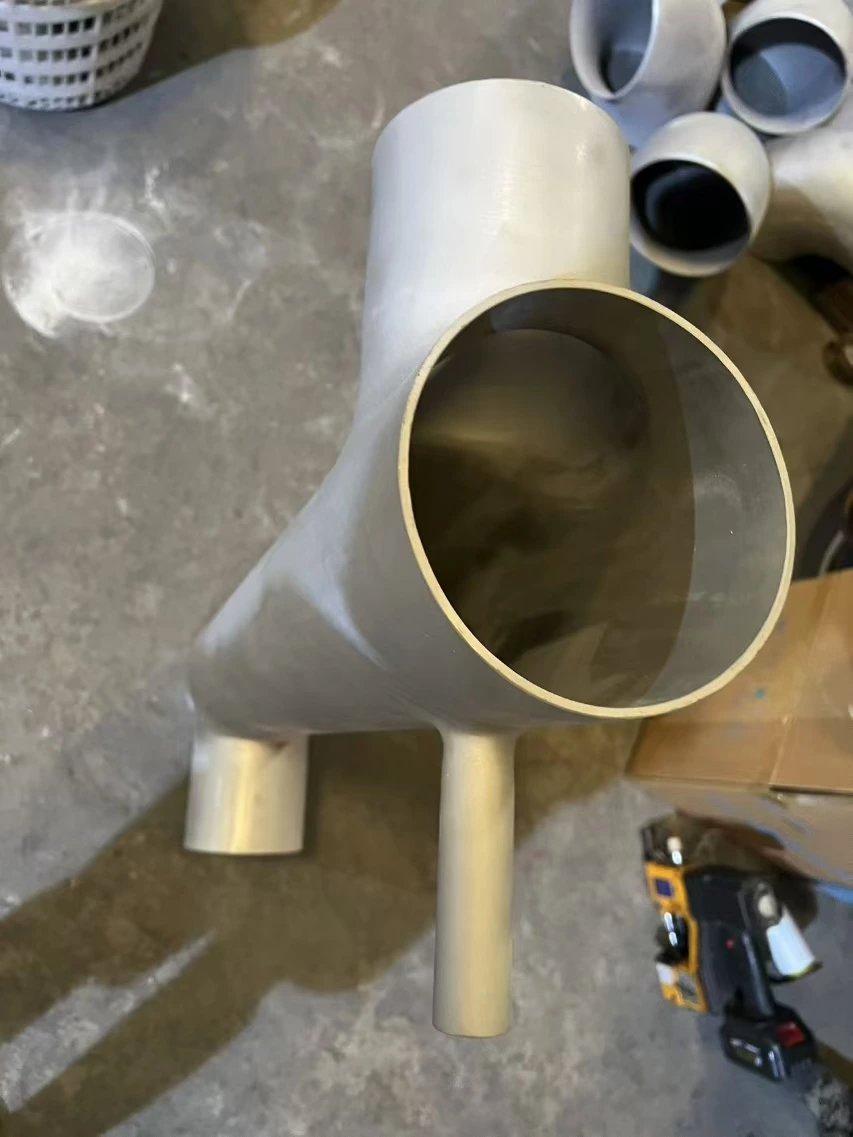Stainless Steel Reducer (reducer) Detailed Introduction
Stainless Steel Concentric Reducer Detailed introduction
Reducers are also called reducers. Stainless steel reducers are used to connect pipes of different sizes. They are generally divided into concentric reducers and eccentric reducers. When the reducer is erected, the projections of the two ports are concentric circles. It is called a concentric reducer, while the projection of the eccentric reducer is a small circle inscribed in the outer circle. The roundness of the reducer should be less than or equal to 1% of the outer diameter of the corresponding end. The allowable deviation is ±3mm. The maximum torque of the concentric reducer is slightly larger than that of the eccentric reducer. The maximum torque of the large end section of the reducer elbow when subjected to torque is relatively smaller than the maximum torque of the small end section when subjected to torque. In the case of the reducer elbow subjected to end torque, the concept that the torque at one end cannot be transmitted to the other end is also proposed. The torque will gradually be converted into bending moment during transmission. The bending moment of one end face of the 90° elbow can be converted from the torque of the other end face. The finite element modeling of concentric reducers, eccentric reducers and reducer elbows is proposed. Method.
If the selected diameter specification of the reducer does not match the inner diameter of the process pipeline, the corresponding reduction or expansion treatment should be carried out. If the pipeline is reduced, it should be considered whether the pressure loss caused by this will affect the process flow. In order to prevent the influence of the distribution of the velocity field after the installation of the reducer, resulting in pressure loss, and thus reducing the measurement accuracy of the electromagnetic flowmeter, the molded reducer requires a cone angle α of no more than 15°. The smaller the better. Characteristics of the reducer: 1. When the flow rate of the fluid in the pipeline changes, the molded reducer, such as increase or decrease, and the velocity requirement does not change much, a reducer must be used. 2. The inlet of the pump, to prevent cavitation. 3. With the instrument, such as the flow meter, the joint of the regulating valve, in order to match the joint of the instrument, a reducer is also required. There are two types: concentric and eccentric. Concentric reducers are generally used on vertical pipes, and eccentric reducers are used for horizontal pipes. And pay attention to indicate whether it is flat or flat.
It is divided into concentric large and small heads and eccentric large and small heads. The materials of reducers include stainless steel reducers (304304l316316l), alloy steel, carbon steel reducers, and the materials of reducers include 20# steel, Q235, Q345, 16Mn, etc. Reducer standards: ** American standard, British standard and various non-standard products. Ministry of Electric Power standard GD0506~0507 Pressure vessel matching flange and tube sheet corresponding standards: JB/T4700~4707-2000 Implementation of national standards (GB/T9112-2000), Ministry of Machinery standards (JB/T81-1959, JB/T74-1994), Ministry of Petrochemical standards (SH3406-1996), marine standards GB/T10752-1999, Ministry of Chemical Industry standards (HG/T5010-1958, HG/T20592-2009), etc. The material of the export forged steel flange complies with the American ASTM A105 standard.
